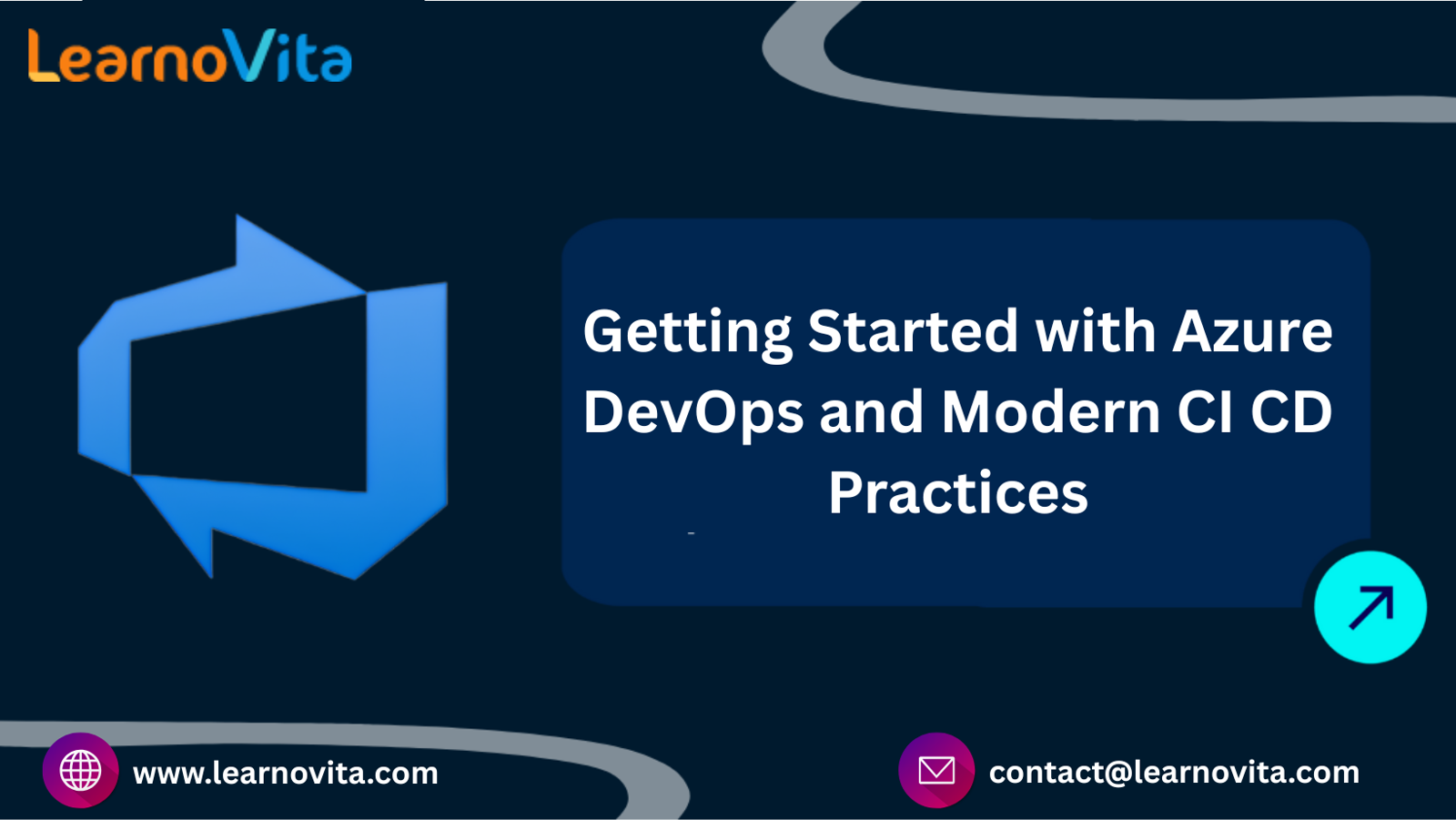Delivering software faster and more reliably is no longer a luxury, it’s the new normal. Whether you're building web apps, enterprise tools, or mobile platforms, developers today are expected to ship code quickly and consistently. This is exactly where DevOps and specifically, CI/CD (Continuous Integration and Continuous Deployment), play a crucial role. If you’re just stepping into this world, Azure DevOps offers a powerful and beginner-friendly platform to get started. This guide will take you through the essentials making Azure DevOps approachable, useful, and easy to implement from day one.
What is Azure DevOps All About?
Azure DevOps is Microsoft’s all-in-one toolkit designed to simplify every step of the software development cycle. From managing code and tracking progress to automating builds and pushing releases everything you need is in one place. The platform is entirely cloud-based, which means you don't need to worry about hosting or infrastructure. It works equally well for individual developers, startups, or large enterprises. Whether you’re managing a small project or working with a distributed team, Azure DevOps helps bring order, visibility, and automation to your workflow. Elevate your career in DevOps with our comprehensive Azure DevOps Certification Course, designed to equip you with hands-on skills in CI/CD, infrastructure automation, and project management using Microsoft Azure.

Why CI/CD is a Game-Changer
Gone are the days of pushing code once a month and spending days troubleshooting errors after release. Today’s development cycles are continuous, automated, and agile and that’s where CI/CD shines. Continuous Integration helps ensure that every change made to the codebase is automatically tested and validated, catching bugs early. Continuous Deployment takes this further by delivering those validated changes directly to users, often without any manual effort. Together, CI/CD practices reduce risk, speed up development, and improve software quality. Azure DevOps brings all these benefits within reach even for beginners.
Key Azure DevOps Services You Should Know
Azure DevOps offers five core services, each designed to support different stages of your development lifecycle:
Azure Boards: Plan, track, and discuss work across teams using sprints, Kanban boards, and task lists.
Azure Repos: Manage your code with Git repositories that support branching, collaboration, and code reviews.
Azure Pipelines: Build, test, and deploy code automatically across any platform or cloud provider.
Azure Test Plans: Execute manual and exploratory testing to ensure code quality and reliability.
Azure Artifacts: Share and manage packages and dependencies across multiple teams and projects.
These tools are designed to work seamlessly together, giving you flexibility to start small and scale up as needed.
Getting Started with Your First Azure DevOps Project
Starting your journey with Azure DevOps is quick and hassle-free. Once you create your account, you can set up a new organization and then launch your first project. This project acts as your workspace; it holds your code, your tasks, and your automation. You’ll choose your preferred version control system (most go with Git), and from there, it’s all about exploring the tools. Whether you’re planning your work in Boards, pushing code to Repos, or automating with Pipelines, everything is designed to be intuitive even if you’ve never used a DevOps tool before.
How to Set Up Continuous Integration
Setting up a CI workflow in Azure DevOps ensures your code is continuously validated. Here's a basic rundown of how the process works:
Link Your Code Repository: Whether it's hosted in Azure Repos, GitHub, or elsewhere.
Choose Build Triggers: Decide when your CI process should run (on each push, PR, or a daily schedule).
Add Build Steps: Define tasks like compiling code, checking for issues, and running tests.
Monitor Results: View logs, get alerts, and fix problems early in the development cycle.
This repeatable process keeps your codebase healthy and helps avoid surprises during later stages of development. Get top-notch training with assured placement support through our Best Training & Placement Program.

Automating Deployments with Azure Pipelines
Once you have CI in place, the next step is to deploy your validated code to different environments automatically. Azure Pipelines lets you release updates to development, staging, and production servers, based on your workflow. With built-in gates, approvals, and rollback options, you can control how and when your code is deployed. Whether you’re hosting on Azure or other platforms, Azure Pipelines supports a wide range of deployment targets and keeps things predictable and safe.
Managing Agile Work with Azure Boards
Azure Boards is your go-to solution for organizing development tasks and staying on schedule. Here’s how it helps:
Break Work into Tasks: Create user stories, bugs, and tasks to keep your backlog structured.
Plan with Boards and Sprints: Use visual boards to track work and assign tasks during each sprint.
Track Progress: Monitor timelines, view dependencies, and follow up on pending work.
Connect Work and Code: Link each task directly to commits, builds, or releases for full traceability.
With Azure Boards, your team stays aligned, focused, and productive throughout the development cycle.
Tips to Succeed with Azure DevOps
Start with a clear plan, define your team roles, decide on a branching strategy, and set up your repositories. Use pull requests and automated reviews to ensure quality. Incorporate testing early in the pipeline to catch bugs before they become blockers. Secure your pipeline with environment-specific variables and credential management. And don’t forget to monitor your builds and deployments regularly to spot trends and potential slowdowns. Azure DevOps is powerful but your process determines how well it works for your team.
Final Thoughts
You don’t need to master every tool in Azure DevOps from the beginning. Start with version control, then add automated builds. Introduce work tracking and testing when you’re ready. Gradually, you’ll build a full CI/CD workflow that’s reliable, scalable, and suited to your team’s pace. Azure DevOps is more than a set of tools, it’s a foundation for faster development, better collaboration, and higher-quality software. Once you take that first step, the rest becomes easier with experience, iteration, and confidence.


Write a comment ...